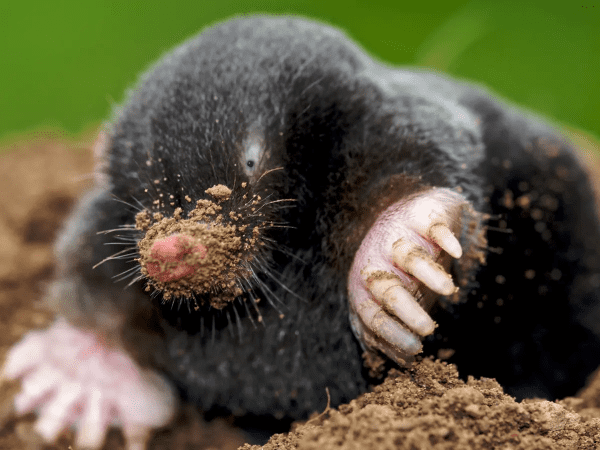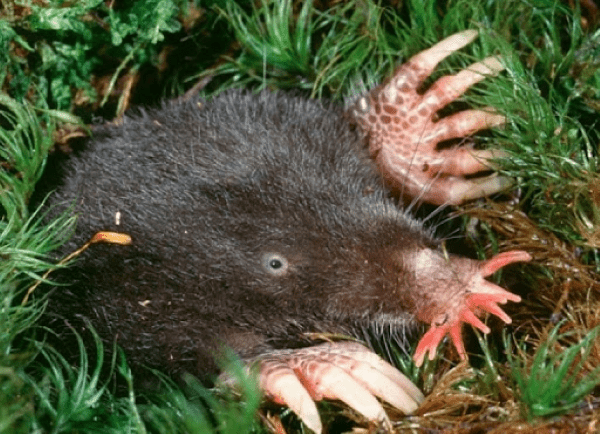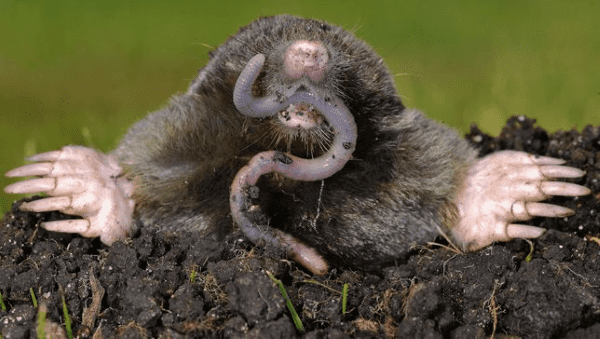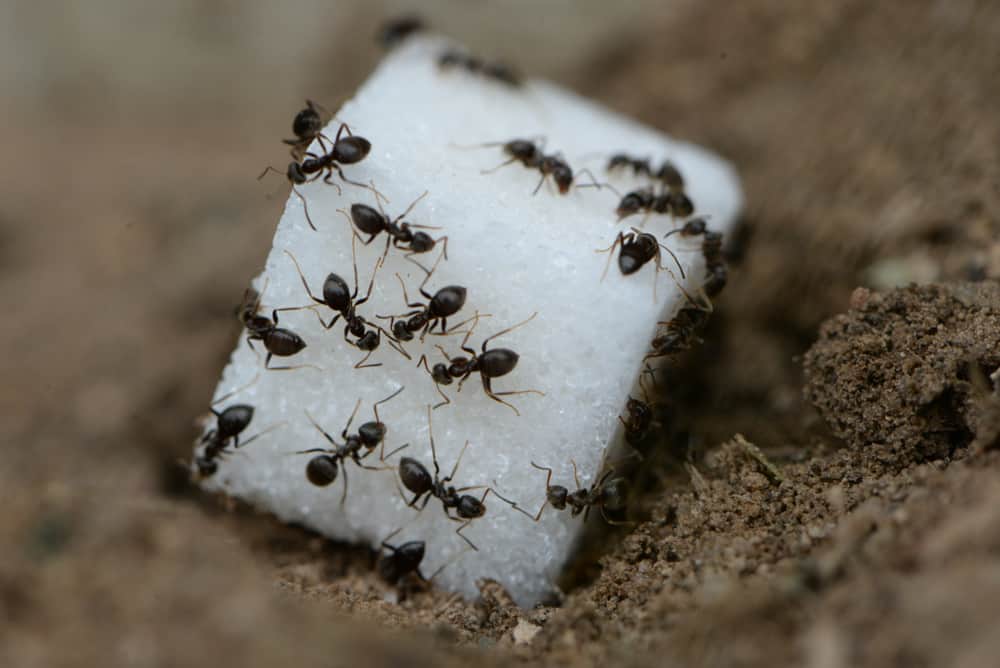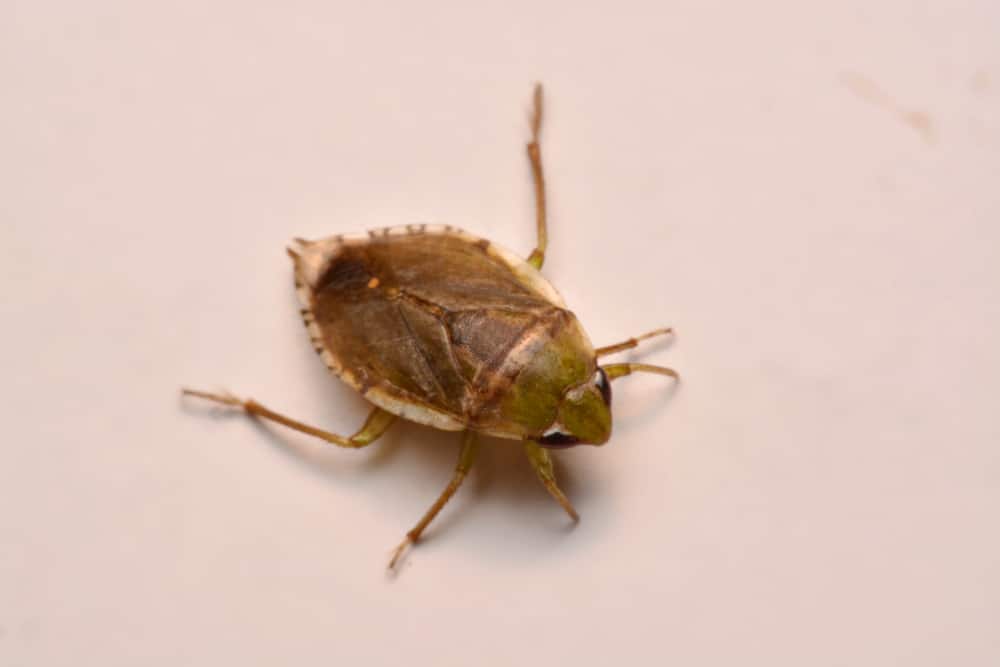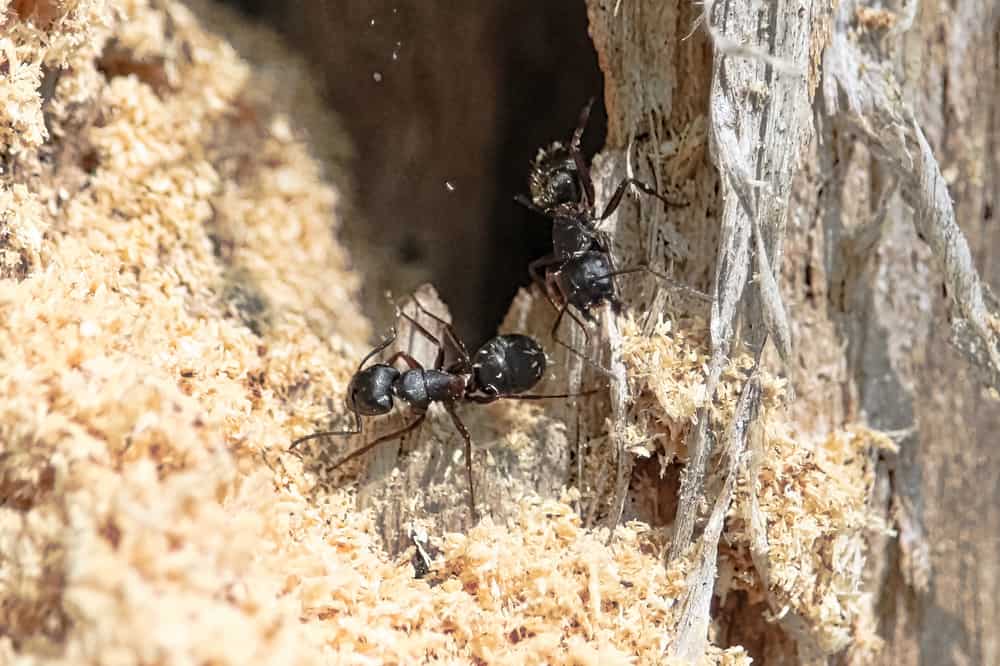How To Get Rid of Moles
If you’re a farmer or gardener, then it can be quite easy to make mountains out of molehills… literally.
Moles have a reputation for upending gardens and damaging yards. They inadvertently kill plants by damaging the roots as they burrow, and the molehills left in their wake will ruin an otherwise perfect lawn.

So, how does one get rid of moles?
Like all pests, you have to understand what moles are and how they act before taking steps to remove them.
Overview
Moles are small, subterranean mammals which are part of the scientific order Eulipotyphla. This means that moles are distant cousins of shrews and hedgehogs, but are considered a unique species.
Because they spend most of their lives underground, moles have developed several unique traits to help them survive in this difficult environment. Their large forepaws aid in burrowing tunnels, and each paw has an extra thumb.
A mole’s eyesight is very poor, as is its sense of hearing. To compensate, they have an incredibly strong sense of smell, even better than mammals like dogs and pigs. Studies show that moles also “smell in stereo,” meaning that they can hear sounds using their nose.
(The star-nosed mole takes this a step further. It has evolved special sensory organs on its nose which allow it to pick up seismic vibrations in the earth.)
The majority of mole species live in North America, Europe and Asia. There are other species which live in Africa and Australia, but these are not considered “true moles” by biologists: rather…
“They are species that happen to share similarities with moles.”
All species of mole are insectivores, and primarily subsist off of earthworms, grubs, and other invertebrates that live underground.
Are Moles Considered Pests?
Many people consider moles a pest, especially if they grow crops or are avid gardeners. Molehills are infamous for being unsightly blemishes on lawns, and moles can undermine plant roots as they burrow tunnels.
While moles don’t eat plant roots, other mammals sometimes take advantage of the mole tunnels to go after exposed roots.
(Weasels, voles, and rabbits in particular are known to do this.)
But unlike many pests, moles can be beneficial in some ways. Their insectivorous diet leads them to prey on insects that damage plants, like grubs and beetles. The tunnels they create also mixes the soil, making it healthier.
Because of these benefits, moles are a protected species in some countries. However, if they cause damage to crops, they may be exterminated with a permit.
(In a few places, like North Carolina, these policies mainly exist to protect the endangered star-nosed moles, but are extended to all subspecies of mole in the region.)
Sure-Fire Ways to Get Rid of Moles
As with most pests, the only way to truly be rid of a mole problem is to kill any moles in the area. There are several varieties of traps that deal with them, as well as a slew of chemicals which can be used in conjunction with traps.
Methods for killing moles include:
- Mole traps: Mole traps are designed to be used at tunnel entrances, where the mole is most likely to travel. When a mole attempts to leave the tunnel, the trap clamps down on it similar to a mouse trap. Some traps, when sprung, stab the mole instead.
- Smoke bombs: Smoke bombs are a highly effective tool for killing moles. Since moles rely heavily on their sense of smell and live in small burrows, smoke bombs can either suffocate them or flush them out and allow the mole to be caught.
- Chemical pesticides: Certain chemical compounds (with nitrogen being the most popular nowadays) can also overwhelm moles. They can be bought as powders or tablets, which dissolve into gas as time passes. The gas then acts like a smoke bomb would, and either kills the mole in its burrow or flushes it out.

Home Remedies for Removing Moles
If you’re planning to remove moles on a budget, or if killing the mole sounds too inhumane, there are several home remedies that can be used to repel them.
Most of these methods exploit the mole’s sensitive nose, which, as mentioned earlier, also functions as secondary eyes and ears.
- Noise-making devices: Moles are highly sensitive to sounds, having adapted to pick up even the faintest vibrations of insects underground. Loud noises not only startle them, but also overwhelm their delicate hearing. Natural noisemakers like windchimes are helpful if you plan to remove moles with sounds.Alternatively, you can set up a wireless radio near a mole’s tunnel to achieve the same effect.
- Blood meal: Blood meal is a powdery substance used as fertilizer or animal feed. As the name implies, it’s made from the blood of slaughterhouse animals like cattle or hogs. Blood meal is an excellent deterrent for all sorts of pests, including moles: the scent of blood normally indicates the presence of a predator in the area, and most animals will flee the area out of instinct.
- Predator urine: Similar to blood meal, predator urine can be purchased to drive away moles and other pests (coyote urine is the most commonly available product). Spraying it around your yard imitates a predator marking its territory, which will drive moles (as well as any other troublesome animals) away from your property. Reapply the urine every 3 to 4 weeks for maximum effect.Note: Be careful when applying this treatment, as it can have the unintended side effect of actually attracting predators into the area. Nobody wants to deal with coyotes or other predatory animals after dealing with a mole problem.
- Other scents: With how sensitive a mole’s sense of smell is, it would probably be easier to list the things that don’t negatively affect it. There are a wide variety of things moles detest that humans might otherwise find pleasant to smell (though there are some things humans also don’t like).
Certain types of flowers, mothballs, tabasco sauce, and pet droppings are just a few of the many things that can drive away moles with their smell.
How to Get Rid of Moles Humanely
Although traps and pesticides are available for killing moles, sometimes exterminating them through violent means is considered inhumane.
Perhaps you recognize the importance of moles in the ecosystem, and just want them to go elsewhere.
Or maybe you just find them adorable, in an odd sort of way.

Whatever the case, you want to get the moles out of your yard humanely.
In addition to the aforementioned home remedies, here are some ways to drive moles away without harming them:
- Grub removal: Grubs form an essential part of the mole’s diet. Since they also damage grass and other vegetation in your yard, killing them has the twofold effect of saving your plants and encouraging moles to look for food elsewhere.If you introduce certain nematodes into your yard, they can eliminate the grubs while also avoiding damage to your lawn or garden.
- Dry soil: This method is as easy at not watering your lawn or garden as often. Worms, and by extension the moles that prey on them, thrive in areas where the soil is moist and shady.Exposing shaded areas to more sunlight can help with this process.
- Mole stakes: “Mole stakes” are stakes which can be planted into areas where moles are burrowing. Once activated, the stakes send vibrations into the earth that disturb the moles, and they will seek out a new territory from there.Click here to see the various “mole stakes” commercially available.
Frequently Asked Questions
Can You Kill Moles With Marshmallows?
According to an online forum for farming, marshmallows are rumored to help kill moles–the sugary treats clog up their digestive systems. However, there are no credible studies to confirm whether or not this method works.
How to Get Rid of Moles with Boric Acid?
Boric acid is commonly used as an insecticide. However, there are no available reports to confirm its effectiveness in removing moles from yards.
What Smells Get Rid of Moles?
In addition to the list of smells mentioned above, moles are also sensitive to the smell of coffee grounds, castor oil, and mint oil.
Interesting Facts
When most people think of moles, the things that come to mind first are “They dig tunnels” and “They’re blind.” But there are plenty of interesting facts to know about moles, some of which can clear up common misconceptions about the species.
- Moles aren’t blind. Even though they do rely on their nose to do the seeing for them, moles actually do have eyes–they’re just very small and hidden by the mole’s fur.
- Moles do have natural predators. While moles spend almost their entire lives underground, occasionally they leave the safety of their burrows to forage for nesting material. This leaves them vulnerable to predators like snakes, foxes, coyotes, and birds of prey.
- Moles don’t hibernate. In the winter months, most animals will retreat into their burrows and sleep until spring. Since moles already have everything they need underground, all they really have to do is dig deeper into the earth to keep warm.
- Star-nosed moles are the fastest-eating mammals in the world. In a 2005 study it was observed that star-nosed moles can identify and devour their prey in an astounding 227 milliseconds. For comparison, the average time it takes for a human to process a red light and brake is 650 milliseconds.
- Mole meat apparently tastes bad. In the 19th century, a man named William Buckland made it one of his goals in life to taste the meat of every living animal on Earth. Of all the specimens he ate, Buckland hated mole meat the most; ironically, his son Frank–who picked up on this rather bizarre habit from his father–frequently served mole stew to his guests.
